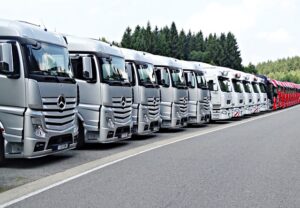The evolution Of Mercedes Benz took time, and a series of affairs introduced the world to the modern-day swift operatives and speed giants. When horse-drawn carriers used to be the ultimate style statements, Gottlieb Daimler and Karl Benz worked on the foundations of modern car engines.
Both came forward to develop the world’s first automobiles – Stuttgart (Daimler) and Mannheim (Benz) in 1886. Because these were the first of their kind, Carl Benz and Gottlieb Daimler were busy marketing their inventions internationally. However, looking into the evolution of Mercedes Benz, the founder and father figure of the company was able to gain a crucial technical breakthrough in 1893 with his invention of double pivot steering.
The Story Behind Mercedes Getting Its Name
Mercedes gets its name after Mercédès Jellinek, the daughter of Emil Jellinek, an Astro Hungarian diplomat and businessman, enthusiastic about cars. In 1897 he brought his first ever Daimler wagon and started his own business, selling DMG automobiles.

With the turn of events, Emil Jellinek had registered his Daimler touring cars with the race organizers in 1899 under the pseudonym “Mercedes.” It was an hommage to his ten years old daughter. The tourist car became a winner and a perfect hit.
On 2nd April 1902, Jellinek signed a contract with DMG, “planning an automobile launch under the name Daimler-Mercedes”. Later, Gottlieb Daimler and Karl Benz combined their companies in 1926, producing the first-ever Mercedes Benz models.
Evolution Of Mercedes Benz In The Era Of World War 2
Mercedes Benz has headquarters in Stuttgart, Germany, from the early days till today. And since the company came into existence a few years before World War 2, there are multiple pictures of Adolf Hitler participating in rallies standing on his Mercedes Benz car models. The entire setup speaks volumes of the futuristic automobile engineering mindset of the makers and how the entire organization had to become a part of a political dysfunction existing during that time.
Mercedes Benz doubled its production in 1932 – from 6000 cars to 12,000 cars in 1934. All of this became possible after Hitler wanted to convey the superiority of German automobile engineering over the rest of the globe. He promised – there would be a complete German-operated automobile industry alongside the autobahn highway system. That was first opened in 1935.

However, owing to the emergencies of the war and the differential needs of the Nazi party, the 30 prototype Volkswagens built by the Marcedes Benz factory in Germany was transformed into a complete military vehicle by 1937. And the common people who had pre-booked the same never got their deliveries. The company gradually shifted to producing armament items – like aircraft engines (DB 600 and 601) and LG 3000 trucks. Also, the Genshagen plant’s location was quite remote inside a forest in South Berlin (1936) to help increase the production of aircraft engines.
The most produced vehicles during the World War 2 era were trucks, and passenger cars were subjected to military production, which came to a standstill by 1942.
Mercedes Benz – Saving Jobs During The Fall Of The Berlin Wall
The fall of the Berlin Wall introduced people from both sides to new experiences and a future they were unaware of. Citizens from the East and West of Germany were coming together, celebrating their combined future ahead.
Mercedes Benz was able to put its hands on Ludwigsfelde – the vehicle production plant in the South of Berlin, previously owned and taken care of by the German Democratic Republic and the Industrial Association for Vehicle Production (IFA).

The plant was famous for producing the W50 – an all-purpose truck for Socialist Germany and other countries. However, with the fall of the wall and the German Democratic Republic consigning to History books, there was a direct effect on the demand for trucks from the plant. In the summer of the 1990s, it almost fell to rock bottom.
As a ray of hope and to save thousands of workers’ jobs, on the 12th of March 1990, a memorandum of understanding was signed between the IFA conglomerate and Mercedes Benz. Werner Niefer – then Daimler Chairman, did sign the same.
So that is all. Focusing on the premium Deutsch heritage, and how it managed to sustain all types of social and political upheavals that engulfed the German state year after year.



